Nepenthes x 'Gaya' 'S' - CarniNep120
Nepenthes x 'Gaya' 'S' - CarniNep120
Nepenthes x Gaya is a compact and easy-to-grow hybrid, resulting from N. khasiana x (ventricosa x maxima). This vigorous tropical pitcher plant produces large, upright pitchers adorned with cherry-red speckles on a yellow-green background. Its traps have wide, oval-shaped mouths, ideal for capturing prey. Nepenthes x Gaya makes a great houseplant.
This product is currently still in stock
Share this plant? Press on one of the following icons.
The pitchers of this tropical pitcher plant x Gaya (Nepenthes x Gaya) are slender and trumpet-shaped, with an attractive color variation of green, red and sometimes purple hues. The inside of the pitchers of this carnivorous plant is smooth and contains a fluid with enzymes that break down insects. The rim of the pitcher (peristome) is often thick and shiny, which attracts the insects. The leaves are elongated, shiny and have a fresh green color. A tendril develops at the end of the petiole that grows into a pitcher. Nepenthes x Gaya is a lowland to midland species, which means it can thrive in a wide range of environments as long as it gets enough warmth and moisture. The colors of Nepenthes x Gaya depend on the intensity of the light. More light often results in more intense red hues, while less light produces greener pitchers. For additional information about this special Araflora plant, the symbols below serve.

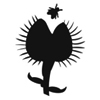


Bright, indirect light is ideal for this tropical pitcher plant. Too much direct sunlight can damage the leaves of the Nepenthes x Gaya, while too little light limits the formation of pitchers. This tropical pitcher plant (Nepenthes) x Gaya thrives in temperatures between 20-30 °C, which corresponds to tropical conditions. High humidity (at least 50%, preferably more than 70%) is important for the formation of healthy pitchers. Use rainwater, distilled water or osmosis water, as this plant is sensitive to minerals in tap water. Keep the soil slightly moist, but ensure good drainage. An airy, well-drained substrate such as a mix of sphagnum moss, perlite and orchid soil is ideal. Insects such as flies and ants provide a natural source of nutrients. In the absence of insects, a liquid fertilizer (very diluted) can be given occasionally, but be careful to avoid overfeeding. The Araflora symbols below provide additional plant care information.





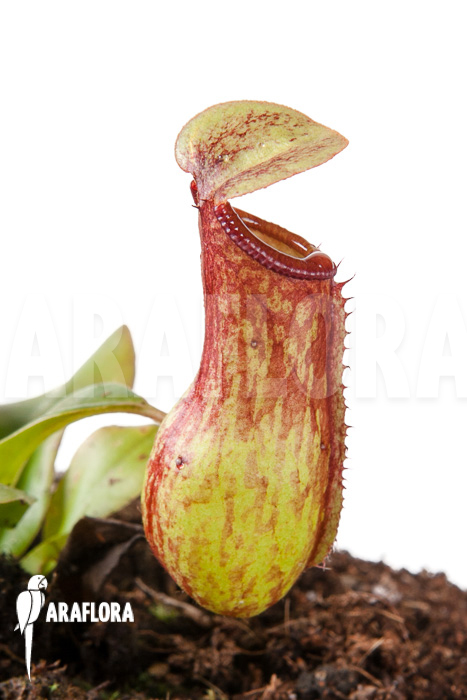

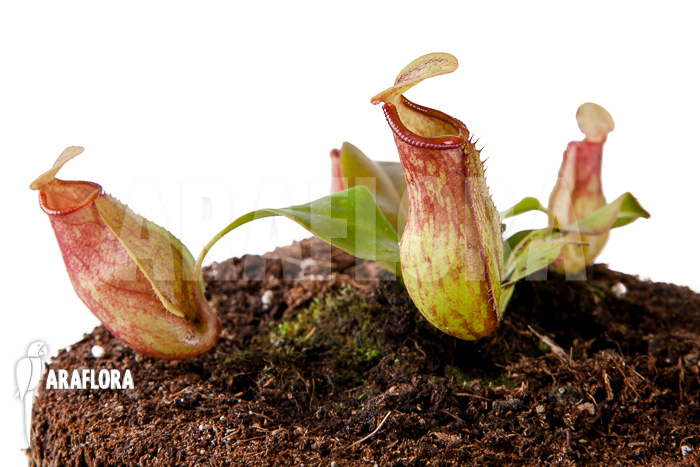
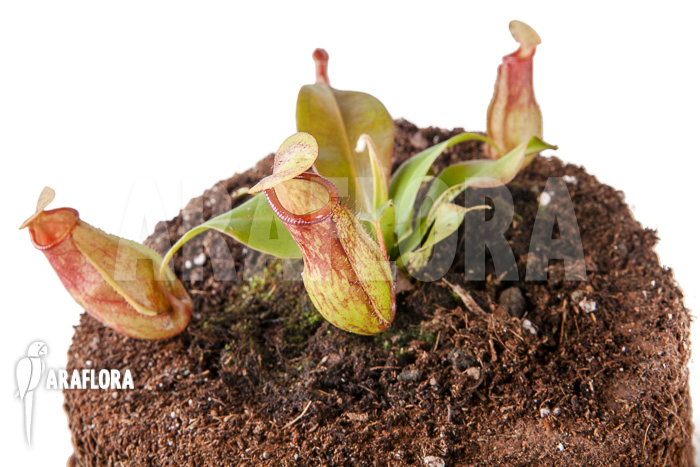
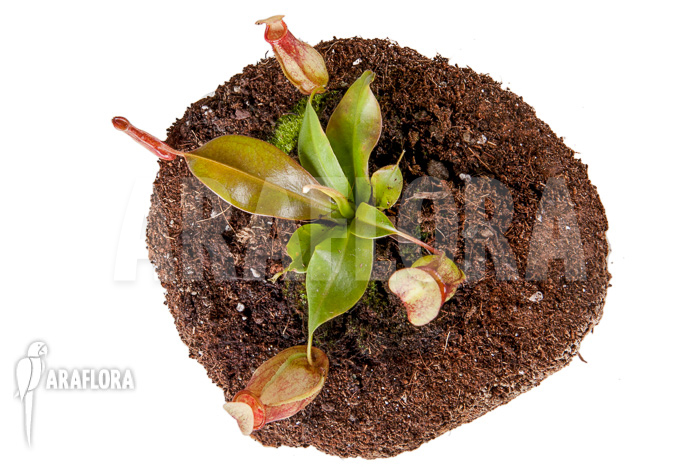

 7 cm
7 cm
 5 cm
5 cm












